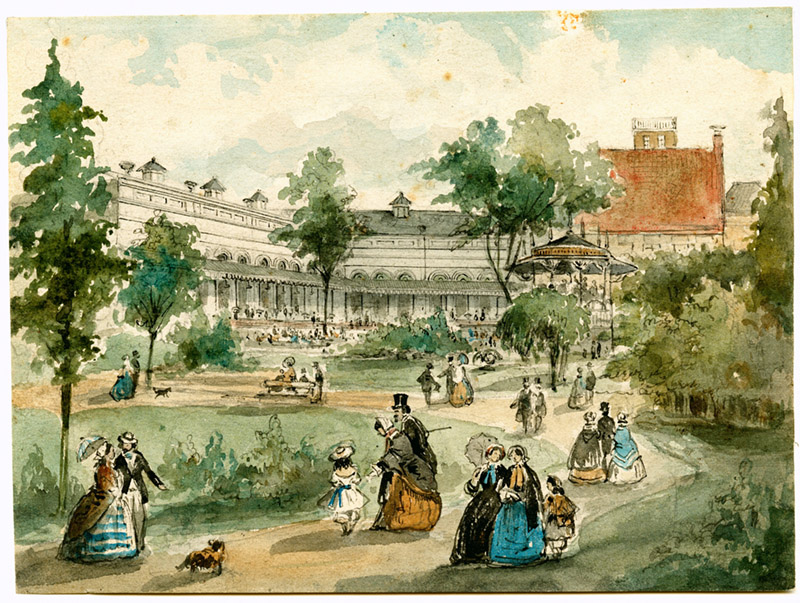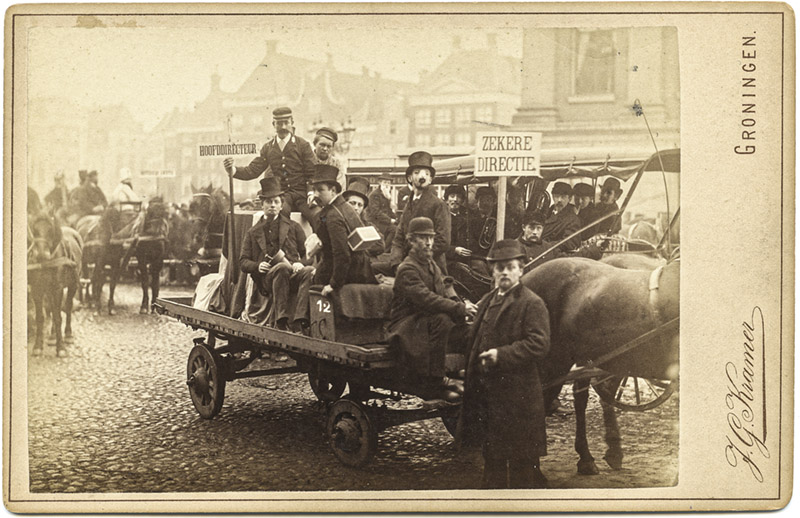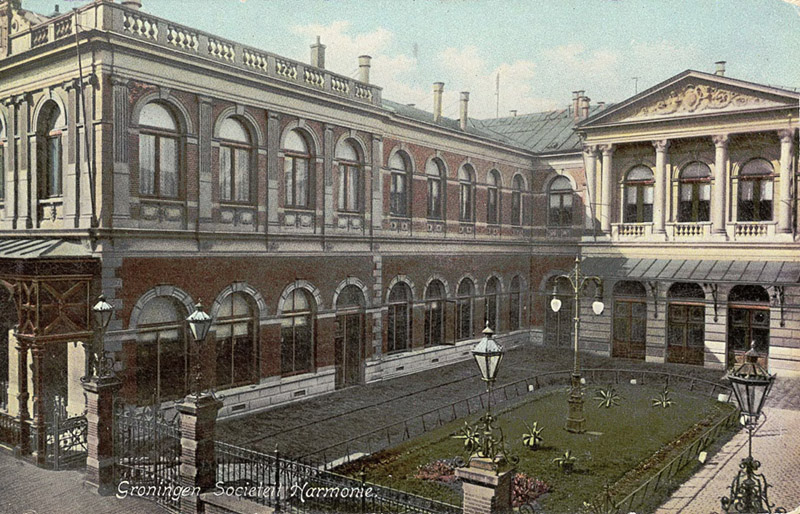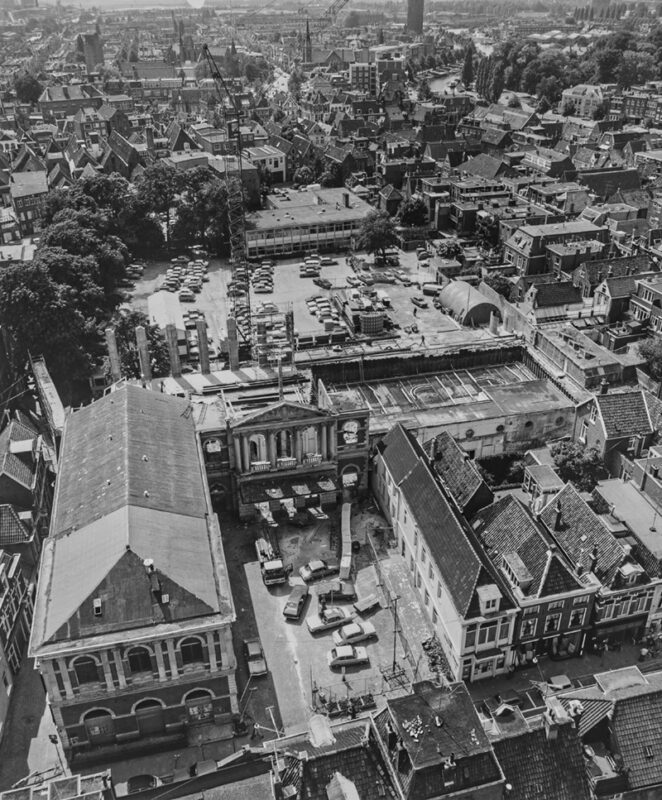waybackmachine
The HarmoniePleasure garden became car park
Look at the photo at the top of this article. That’s what the lovely square in front of the Harmonie building looked like fifty years ago. Before the university put up the current building, it was a drab car park. Famous cultural centre De Harmonie had already moved by that time, and the buildings were dilapidated.

How different things were in 1856, the year that the famous Harmonie club opened its doors in what is now the Harmonie building (the complex was named after its illustrious predecessor).
For more than a hundred years, the Harmonie was a staple in Groningen society. The acoustics in the large concert hall were so good it was famous the world over. But the club also had smaller halls, a billiard room, a ‘conversation room’, and a reading room. It was the pre-eminent meeting place for cultural Groningen.
Floor plan from 1822, designed by J.W. Karsten, Collection Groninger Archives
But before that, in 1822, the university had different plans for the plot of land. They wanted to build a new Academy building, since the old one, at two hundred, needed replacing.
The building would face the Oude Kijk in ’t Jatstraat and the large, enclosed garden would become an ‘economical garden’. It would be a place where famous agricultural professor Herman van Hall (1801-1874) would plant agricultural crops and grow seeds.
Unfortunately, the state wouldn’t pay, and the plan was scrapped.
Dirty alleyway
A year later, Van Hall’s garden moved to the Oude Kijk after all, a move he wasn’t particularly happy with. The plot lay too low, was too wet and too small, he felt. On top of that, he had to cross the Uurwerkersgang, a dirty little alleyway, to get there. It wasn’t at all suitable for the farmers and growers the professors wanted to invite to show them how to increase their output.
Fortunately for Van Hall, he was able to rent an extra plot of land in 1830: the current Harmonie square, which back then was the art academy’s garden. It was also accessible from the Oude Kijk in ’t Jatstraat.
Unfortunately, he was kicked out in 1839, since the city council wanted to build an insane asylum on the grounds. He then moved his garden to a plot next to the Hortus Botanicus, which today is the Faculty of Behavioural and Social Sciences.
The asylum was never built. But in 1856, De Harmonie club was opened.

Not just regular residents of Groningen loved everything the club had to offer. The members of Vindicat joined en masse and used De Harmonie for activities such as their annual student ball, sports tournaments, chess matches, and much more.
Vindicat back then was a lot like it is now, which meant they often fought with the citizenry and De Harmonie’s directors. Sometimes it was because they interrupted a classical concert by loudly talking. Once, in 1892, they loudly demanded the orchestra play their song ‘Io Vivat’. When the orchestra refused, the students decided to do it themselves.
Banned
The students were banned and fined. Vindicat was offended and demanded the directors apologise. They refused, and Vindicat decided that any member of De Harmonie was not allowed to be a member at Vindicat.
Now both parties had a problem. Vindicat, because they were suddenly responsible for organising their own concerts and parties, and De Harmonie, because it was missing income from Vindicat members. A special committee, chaired by former mayor and Upper House member B. van Royen, had to unruffle everyone’s feathers.

The club started to decline in the twentieth century. The building started to look increasingly shabby. A fire in 1941 damaged the roof, which was never properly fixed, even though the club continued to use the building. By 1973, the building was in such disrepair that the city decided to tear the whole thing down.

The university seized the opportunity. For a long time, it had planned to house the alpha sciences around the old Hortus, just like the university library. But that plan was called off in 1978.
The university bought the land and started building. Some of the buildings, such as the parts next to the Uurwerkersgang and the original entrance, were restored. Behind that, the university built the modern classrooms and offices that housed the law faculty and ultimately, in 1989, the arts faculty.